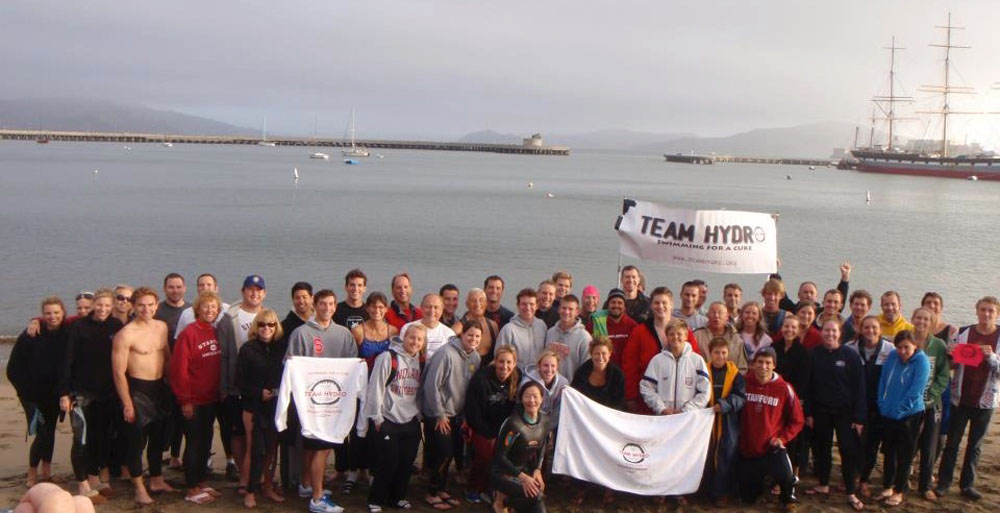It is hard enough to support a seriously ill child through a devastating and poorly understood illness. But it is quite another thing to start an organization devoted to raising money to publicize the disease and raise money for research.
That, however, is just what the Finlayson family did when their daughter Kate was fighting for her life from hydrocephalus, which is an abnormal buildup of cerebrospinal fluid in the brain that can cause coma and sometimes death. In 2008, two years before Kate died, they founded Team Hydro, which, among other activities, sponsors two annual summer swimming events.
What makes families like the Finlaysons start such organizations? And what keeps these families motivated, even after their loved one dies? What is clear is that without such individual initiative, certain diseases will remain in the dark. Team Hydro provides a model for other potential health activists seeking to get their concerns on the map.
The tradition of sick people and their families starting disease-related foundations goes back decades. For example, in 1950, Paul Cohen, a New Yorker with muscular dystrophy, helped found the group now known as the Muscular Dystrophy Association. One of the best-known organizations is the Myelin Foundation, founded in 1989 by Augusto and Michaela Odone to fight the neurological condition that afflicted their son, Lorenzo, as told in the film Lorenzo’s Oil.
The rise of patient advocacy and the Internet has proven to be a potent combination for individuals interested in drawing attention to specific medical conditions—especially those that are not well-known. The National Organization for Rare Disorders in an umbrella group for 250 organizations, almost all of which were started by families of sufferers.
Kate’s saga began in 1984, when she was born 3 ½ months prematurely and suffered a severe brain hemorrhage. One of the complications of the bleeding was hydrocephalus. Even though they were skeptical that Kate would survive, her doctors used the only available measure to treat hydrocephalus: a silicon shunt that removed fluid from around Kate’s brain and drained it into her abdomen.
The response was dramatic. And though Kate suffered from ongoing physical and mental challenges, including weakness of one side of her body, she grew up quite healthy. But at age 10, her shunt failed, leading to more hydrocephalus and another hemorrhage.
Over the remaining 15 years of her life, Kate would undergo over 150 operations to try to treat her chronic hydrocephalus. Because the fluid became loculated—that is, localized in separate pockets—she eventually needed several simultaneous shunts. Nevertheless, Kate graduated high school with honors and enrolled in college, where she hoped to become a nurse. She also became an avid swimmer, which helped to strengthen her body.
Sadly, Kate spent the last year and a half of her life in intensive care units, where surgeons desperately tried to fix and replace her shunts, hoping somehow to remove the fluid that was drowning her brain. She eventually lost her vision and her ability to sit up. Ultimately, she died of an infected shunt in 2010. She was 26 years old.
Kate’s medical course had many ups and downs, but what most amazed her and her family was how often her case seemed to baffle her doctors. Placing and replacing shunts was still the predominant treatment for hydrocephalus even though as many as one-third of them failed within one year of placement. In one instance, a doctor rigged up a successful system that allowed for Kate’s family to pump out the fluid manually. But much of her treatment was just guesswork.
Moreover, despite the fact that there are over a million Americans with the condition, no one seemed to know about it. According to her mother, Pam Finlayson, people often assumed Kate had brain cancer. And when Kate explained otherwise, there was not always sympathy. “If you have something wrong with your brain,” she explained, “people just think you are weird.”
Finally, despite the prevalence and severity of hydrocephalus, there was not much research going on. Compared to breast cancer, Alzheimer’s and other diseases, hydrocephalus did not attract either attention or funding. It was not until 1983 that a parent support group formed the Hydrocephalus Association, with which Team Hydro now partners.
So when Kate’s brothers, Peter and Sam, wanted to do something to honor their sister, they formed Team Hydro, which is “dedicated to raising awareness about and finding a cure for” hydrocephalus. And they chose their sister’s favorite sport, swimming, to achieve their goal. The Team Hydro group that swam on August 13, 2016 from Alcatraz Island to San Francisco included two teenagers who have hydrocephalus. And the September 17, 2016 swim of Boston Harbor will include members of the Massachusetts Institute of Technology swim team, recruited by Sam, now a medical student at Harvard. To date, Team Hydro has raised over $500,000 for hydrocephalus research. (Donations can be made here.)
So how did Kate’s family get the energy to form Team Hydro? At first, they were inspired by Kate’s strength and courage to try to find better, non-surgical treatments. After she died, they wanted to keep hope alive for others suffering from hydrocephalus—something Kate wanted them to do. Grants from Team Hydro are currently funding research projects at Washington University, Indiana University, the University of Illinois and in Australia.
Starting an organization to study and publicize a loved one’s illness is not for everyone. It is draining work on top of an already draining situation. But one has to admire those who manage to do this. As Pam Finlayson says, “It’s simply too hard to bear the idea that others continue to suffer as Kate did.”
Originally published on forbes.com on September 12, 2016.
